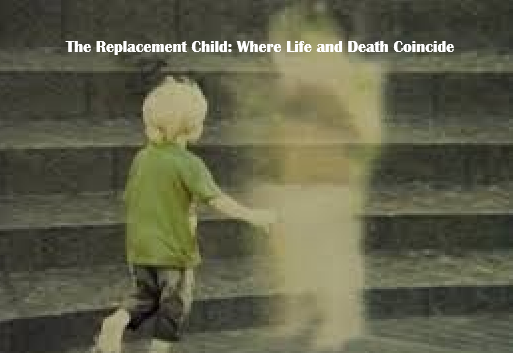(Image courtesy of Psychology Today, 2013)
The phenomenon of the replacement child carries profound psychological and symbolic significance. As defined by Jungian analyst Kristina Schellinski, the replacement condition in the psyche emerges when a child is unconsciously expected to substitute for a lost sibling or another deceased family member. In such cases, the child is not fully seen for who they truly are but becomes entangled in the family’s unresolved mourning and unmet expectations. This burden can distort the formation of selfhood, placing the child in a liminal space—between the living and the dead. They grow up with a haunting sense of duality: both alive and tethered to a psychic presence that is no longer living.
Carl Gustav Jung’s own life began in the shadow of death. He was born into a family marked by sorrow: his mother had mourned three children before his arrival—two stillborn daughters and a son named Paul, who died five days after birth. Jung entered life as the first surviving child. As Jungians, we should take seriously the possibility that this difficult ancestral inheritance shaped the foundations of analytical psychology, influencing Jung’s profound attunement to psychic opposites, his experience of two personalities (No. 1 and No. 2), and his lifelong emphasis on individuation—the process of becoming one’s true self.
In The Red Book and The Seven Sermons to the Dead, Jung gave symbolic voice to these archetypal depths. In the final sermon, he introduces the paradoxical and numinous figure of Abraxas, who “shines with the light of creation and the blackness of destruction”—a symbol of totality that unites the most contradictory forces: good and evil, light and darkness, life and death.
Jung writes:
“Abraxas is the god who is difficult to know. His power is the greatest, because man does not see it. From the sun he draws the supreme good; from the devil the worst evil. But Abraxas is the life, the eternal becoming, the eternal creation, the eternal passing away.”
Abraxas lives where the void and existence coincide—it is a paradoxical force that transcends moral dualities and holds together all opposites in the crucible of psychic wholeness. To encounter Abraxas is to stand in the storm of these tensions and remain whole. In this light, the replacement child may be seen as bearing the imprint of Abraxas—inhabiting a liminal realm where mourning and meaning, absence and presence, life and death co-exist. Their individuation involves awakening from inherited projections, confronting ancestral ghosts, and transforming a fate into a destiny. The path toward healing is the courageous work of becoming oneself, not in the absence of loss, but through it.
Author: Patrycja Jackson, AJA Member 2025

